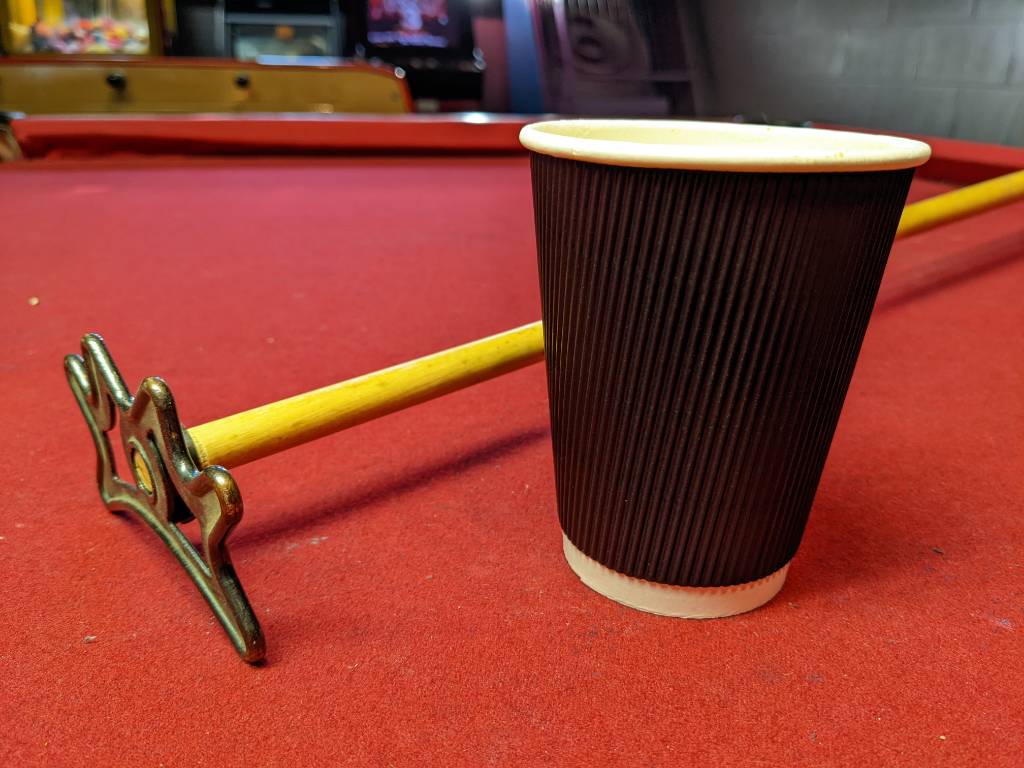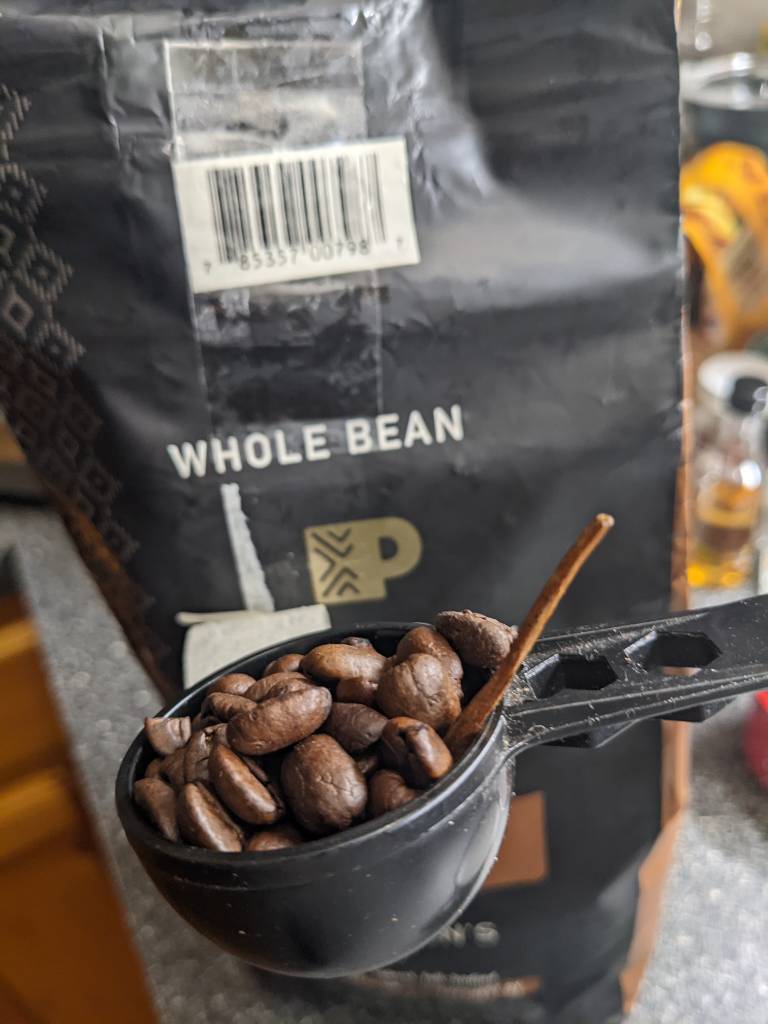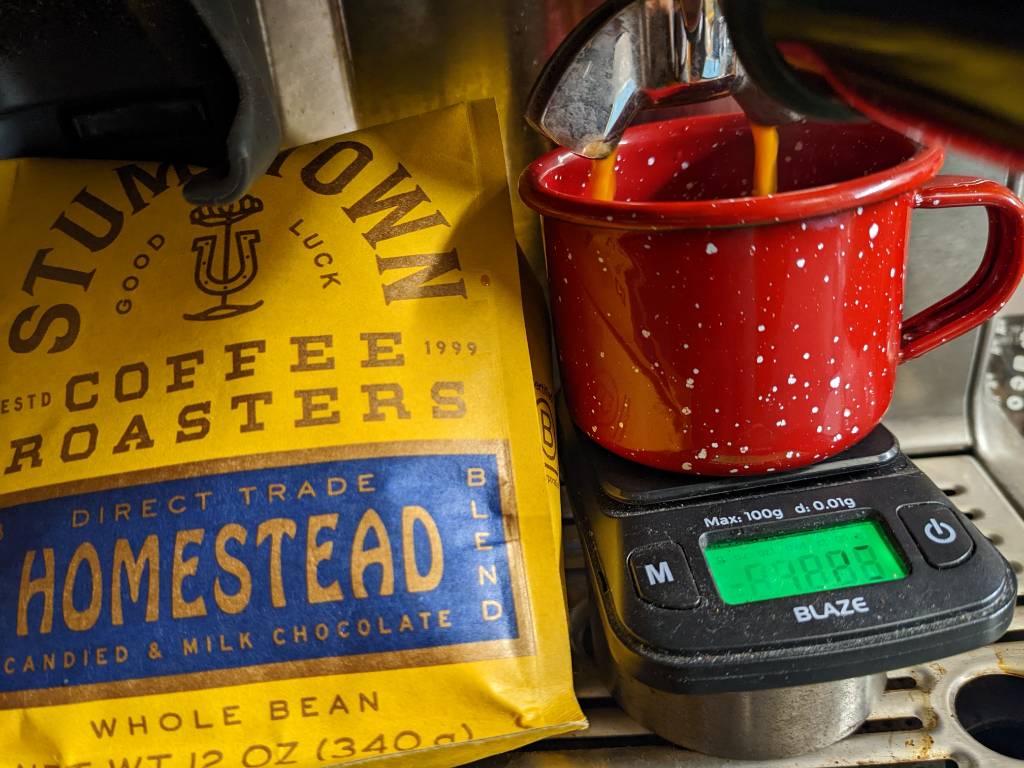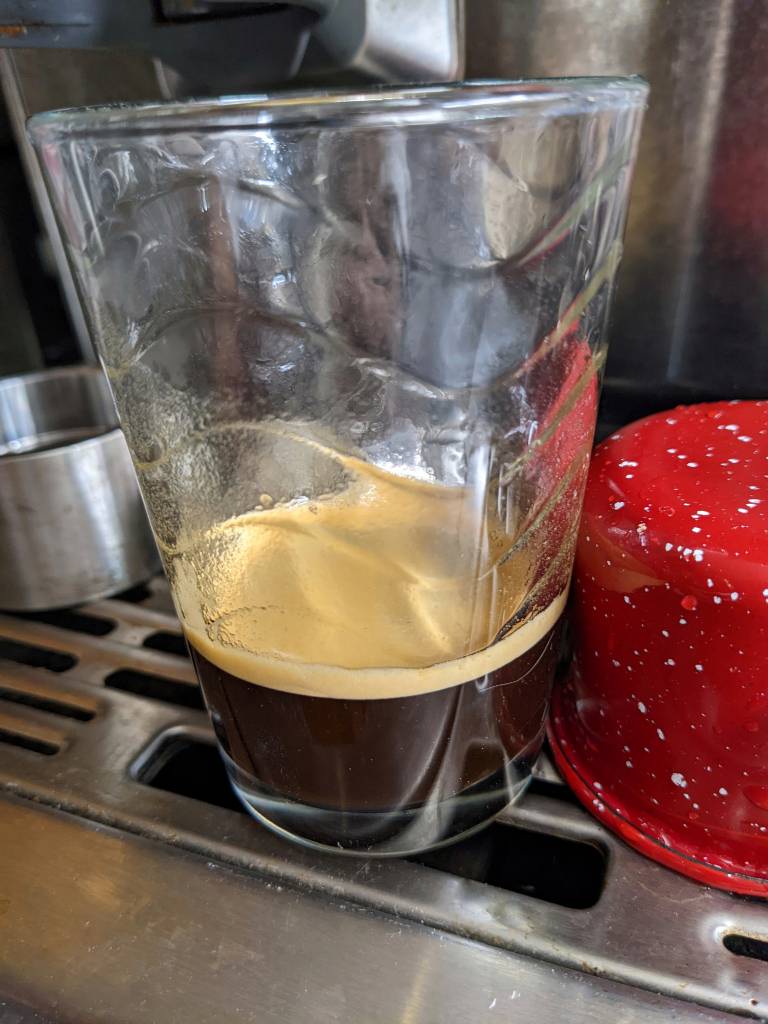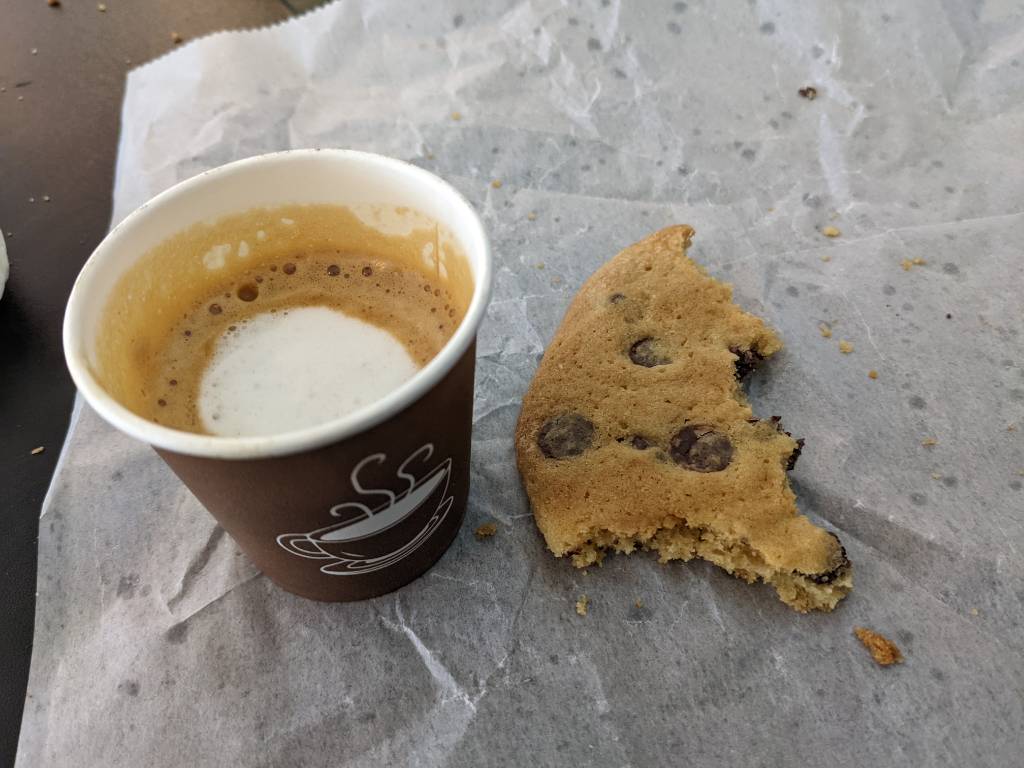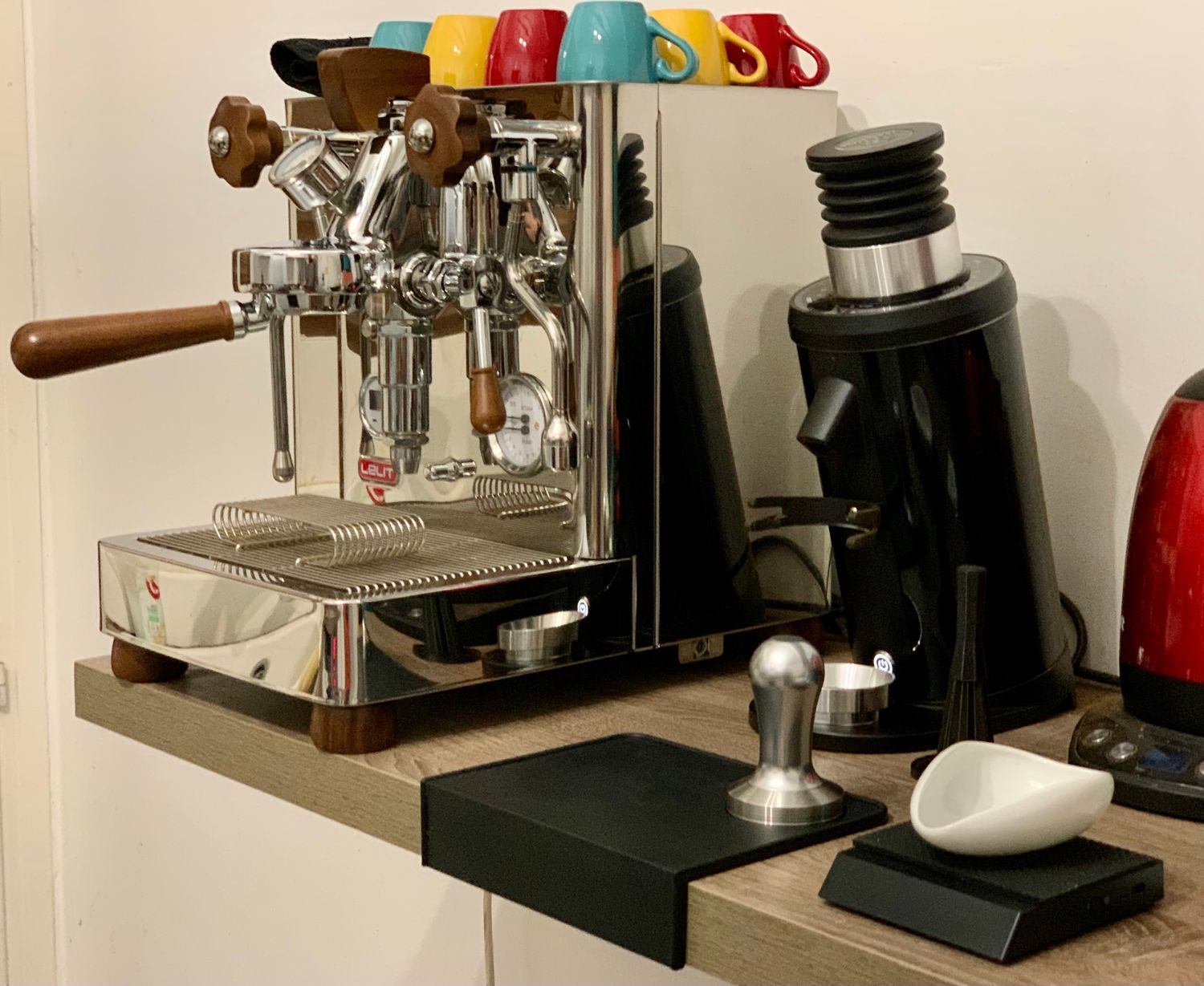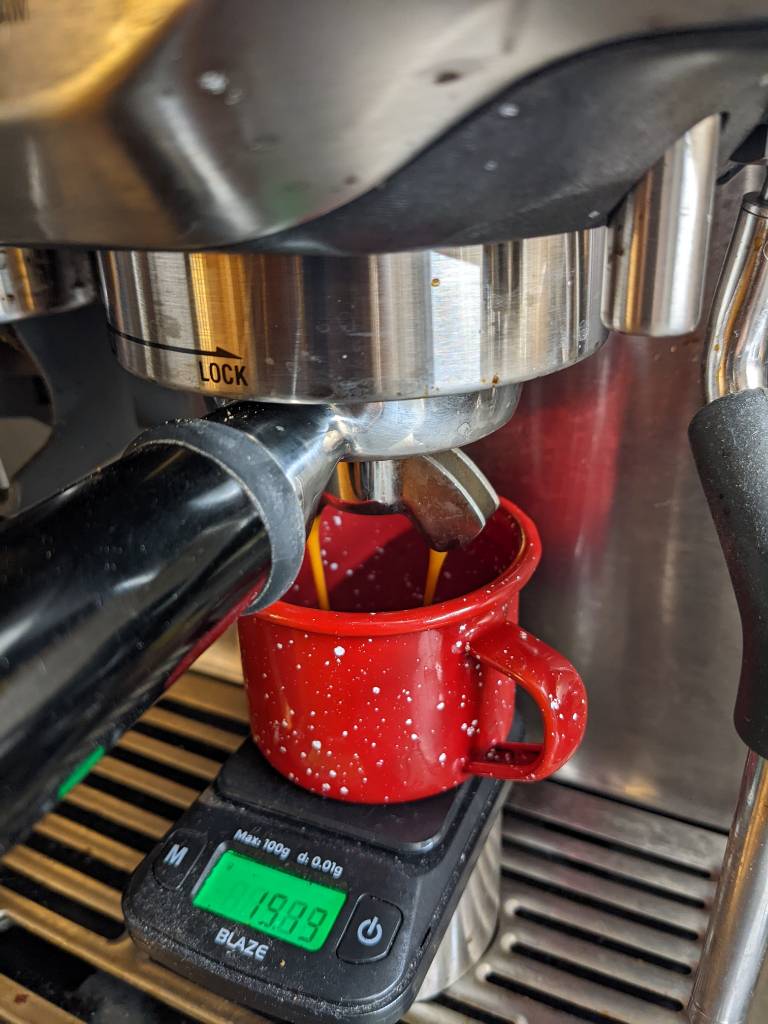Espresso
Strong, potent coffee news for strong, potent coffee lovers.
Hoping to mirror the great community of r/espresso.
We are a kind and accepting community for those who love, want to love, are getting into, or are interested in espresso and espresso accessories.
Rules
I didn't think we needed this section on Lemmy, but...
- All of the rules of this instance.
- Be nice.
- Be respectful.
- No trolling.
- Basically, don't be a dick.
(No exceptions)
Resources
Here is the main resource from the same sub, since it's amazing.
If any of the original mods, or anyone else who loves espresso, would like to take control or help mod, please let me know. I'd be as happy to help as to pass the reigns.
A gracious community member has added some of the resources from the Reddit sub.
(I tried to grab all of the links from it, please let me know if I missed any)
<Wiki from r/espresso>
Links
Google Sheets List of Espresso Machines
Espresso Aficionados - Discord
Espresso Aficionados - Wiki (as of May 2023, this is the most up-to-date resource for machine recommendations and it has a bunch of detailed guides for how to dial in espresso, puck prep & troubleshooting, and more advanced techniques!)
Espresso 101 Espresso starts with the coffee bean. Fresher is better. As u/Beans_McGhee says, "The beans really need to be roasted within the month you use them for perfect espresso." Store-bought beans are fine, really—but part of the "fun" of espresso is trying different beans.
You grind your coffee beans using a grinder. This sub has lots of opinions on grinders.
The amount of ground coffee you use is called the dose. So when u/SingularLattice says, "Make sure you have the right dose for your basket", that's what he means.
A basket is the little metal cup that goes in your portafilter—that's the metal thing with a handle on it. Espresso machines often come with 4 baskets: a single and a double in both unpressurized and pressurized. Doubles are the larger ones; pressurized variants are a different shape and may say "dual wall" on the bottom.
You would use dual-wall if you are using pre-ground coffee. Almost everyone will make ("pull") double shots—when you get into weights and times, it's all based on a double. So you should likely use the unpressurized (single wall) double basket.
Advanced practitioners will dose by weight. Typically, you'd want ~7g for a single shot and ~18g for a double shot. Automatic grinders may dose by time: this will get you "close enough". Thus, the "single" dose will be around 7g and the "double" will be around 18g. (You can fine-tune these amounts—more on that later.)
Coffee grounds are light and fluffy, but you want them to be compact for espresso, so you tamp them (with your tamper). Advanced practitioners will calibrate their tamping pressure (e.g., with spring-loaded tampers)—don't worry about that. Just give it a reasonable amount of force. If you're putting your whole body weight on your tamper, that's too much.
You will get a feel for the right amount of force. You can also look at the level of the grounds in the basket. Use shape of your tamper or other tool to estimate how much space should be between your (tamped) grounds and the top of the basket.
As u/SingularLattice says, "You need to tamp FLAT, not hard. So long as it’s firm, you’re good."
At the advanced level, preparing espresso is all about ratios, namely weight and time. Generally, you want a 2:1 ratio in about 30 seconds. The 2:1 ratio means the ratio of your dose (i.e., ~18g) to the resulting espresso (i.e., ~36g). The process of brewing espresso is called extraction.
Many espresso machines will do this for you! When you press the double shot button, it will dispense enough water to make the "right" amount of espresso... presuming you're using the right basket and the right dose! With such machines (e.g., the Breville Barista Express, or BBE), what you should do is watch the pressure gauge. It should be in the "espresso range". (Advanced practitioners will measure pressure in bars—you want ~9 bars in an ideal world.)
If the pressure is low, you either need more grounds (higher dose)—which you can get by adjusting the grind amount—or a finer grind—which you can get by adjusting grind size. You may also need to tamp harder, but typically this isn't the problem.
(If your pressure is too high, the inverse is true... but this doesn't happen very often.)
Every bean is different, and so needs different settings to produce a good result—in your case, to keep that pressure dial where you want it. The process of adjusting these different settings is called dialing in.
Your goal here is a well-extracted shot. That's all about how it tastes! Espresso should be sweet and balanced. If it's sour, it's under-extracted (to which you would grind more and/or finer); if it's bitter or astringent, it's over-extracted (to which you would do the opposite).
Everyone here is adjusting all these variables (bean, pressure, grind size, dose, ratio, extraction time, and more) in search of the perfect shot!
(Derived from this post by u/basseq.)
What espresso machine should I buy? Great question, and a very common one. Generally, there are two key inputs:
How much do you want to “tinker” with your espresso? Do you want to play with different variables, or just wake up to a good coffee?
How much do you want to spend?
Espresso can be a very expensive hobby, so the answer to the second question can you get to the best bang for your buck.
Remember that espresso is not just the machine. The other notable expense is the grinder, which can be as much as—if not more expensive—than the machine itself. There’s also some key accessories (notably a scale) and the cost of good coffee itself ($15+/lb).
Recommendations by Budget <$500 – Bare Bones If you’re looking to step up from a Nespresso or just drink less Starbucks, start here. There are really two ways to go:
Manual ($250–$300) – Flair Neo ($125) + 1Zpresso JX ($130).
Automatic ($450–$500) – Breville Bambino ($350) + Baratza Encore ($170).
The DeLonghi Dedica ($350) is also a solid choice. For grinders, you can also check out the Breville Dose Control ($150), or upgrade to the 1Zpresso J-Max ($230). The Sette 30 ($300) and Mignon Notte ($320) grinders are solid, but may put you above $500.
If you’re really looking to do espresso on the cheap, forego the grinder and work with pressurized portafilters on the Neo or Bambino. Many of us started with things like the DeLonghi EC155 ($100), but it’s hard to recommend.
Keep in mind that the espresso you get in a cafe was ground on a grinder that cost around $2000 and brewed on a machine that cost at least $15,000. You can't shrink all of that into a sub $300 setup without a huge loss of quality. –u/MyCatsNameIsBernie
$500–900 – Entry Level If you think you’re “serious” about espresso, this may be a better entry point than above, which you might outgrow sooner than later. There are two common choices here:
All-In-One – Breville Barista Express ($750) or Pro ($850). While the community sees the built-in grinder as the weak spot (no upgrade path), and long-term reliability can be spotty, it an easy and popular entry point into the prosumer market.
Separate Setup ($800–900) – Gaggia Classic Pro ($500) + Baratza Sette 270 ($400) – The Gaggia is a classic and time-tested, with lots of options in the used market.
Something like a Bambino Plus ($500) or Lelit Anna ($570) might also work. There are a lot of good grinders in this range: the DF64 ($400), Eureka Mignon Silenzio ($470), Baratza Vario ($480), and Rancilio Rocky ($430) are all well-regarded.
If you’re strapped for cash, the r/espresso guidance is to prioritize the grinder. Better to run a cheaper machine (Bambino/Dedica) with a nicer grinder than the other way around.
$900–$1,500 – The Standard The endgame for many people, this range is probably the “sweet spot” for great espresso without going over the deep-end.
The r/espresso Standard – Rancilio Silvia ($850) + Niche Zero ($680) – The Silvia is a classic, moddable, and can be found used. For this price range, the alternate choice might be something like a Lelit Glenda ($900), or pairing a Gaggia with a nicer grinder. For grinders, ECM and Profitec both have offerings ($550), Baratza Vario W+ ($600), Eureka Mignon Specialita ($700), or any of the ones in the previous category. You can start mixing and matching machines and features and specs.
$1,500–3,000 – Prosumer We’re getting heavily into the “prosumer” market now, and there are less common machine+grinder pairings, so we’ll start looking at them separately.
Machines – Profitec Pro ($1,800), ECM Classika ($1,600), Lelit Elizabeth ($1,700), Rocket Appartamento ($1,700). The land of shiny chrome and lots of knobs. The Breville Dual Boiler ($1,600) is in this range too.
Grinders – Mazzer Mini ($800), Mahlkonig X54 ($750), Eureka Oro ($800).
$3,000+ – Dream Machines From here, it’s dream machine land and the art of the possible. If you’re asking, “What should I buy,” you probably shouldn’t start here.
Machines – Lelit Bianca ($2,900), ECM Synchronika ($3,200), Decent DE1 ($3,500), plus some offerings from Isomac, Rocket, Elektra, or Nuova Simonelli. You get into true “endgame” machines like La Marzocco Linea Mini ($5,900) or Slayer Single Group ($10,000).
Grinders – Eureka Atom 75 ($1,400), Mahlkonig E65S ($2,300), KafaTek Monolith Flat ($2,500), Weber EG-1 ($3,700).
